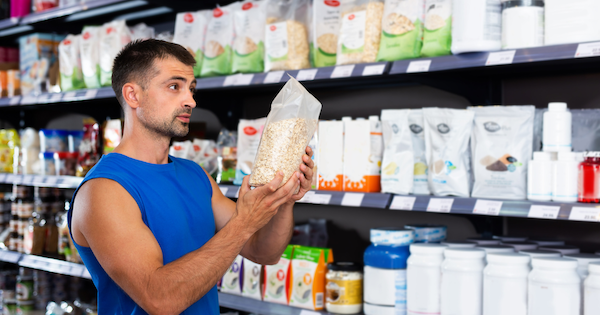
How to Buy Psyllium Husk & Embrace The Fiber Revolution
Welcome to the fiber revolution, where psyllium husk reigns supreme! Okay, maybe it’s not the flashiest trend out there—no influencers are posing with a jar of psyllium powder like it’s the latest superfood—but trust me, this unassuming fiber champ is exactly what your digestive system needs.
Not gonna lie, when you attempt to buy psyllium husk, it’s like stepping into a wild world of fiber confusion. With a dizzying array of options on store shelves and online, how do you know which one won’t turn your morning routine into a gritty disaster? Don’t panic—I’ve spent years decoding wellness fads, testing products, and overanalyzing ingredient labels so you don’t have to. Grab a glass of water (hydration is key, folks), and let’s embark on this thrilling psyllium adventure together.
Psyllium Husk is Your Gut’s New Best Friend
Unlike trendy “it” foods that fizzle out faster than your New Year’s resolution, psyllium husk has been holding it down for decades. It comes from the seed husks of the Plantago ovata plant and has a special superpower: when it meets liquid, it morphs into a gel-like wonder that keeps your digestive system humming along smoothly.
Whether you’re dealing with “Why haven’t I gone in three days?” or “Oh no, I have to go NOW,” psyllium’s got your back (or, more accurately, your gut). It’s the fiber that plays it cool, balancing things out no matter what’s happening in your digestive drama.
Oh, there’s more! Psyllium husk doesn’t just make your bathroom trips more predictable. It can help curb those snack attacks, support heart health by nudging cholesterol in the right direction, and even slow down sugar absorption to keep those blood sugar spikes at bay. Who knew a humble husk could do all that?
Cracking the Psyllium Husk Code
Not all psyllium husk products are created equal, and deciphering labels can feel like reading ancient hieroglyphics. Here’s how to separate the fiber gold from the fiber garbage:
The Fiber Factor That Actually Matters
Some manufacturers take a perfectly good plant and blast it with heat like they’re trying to launch it into space. This damages its delicate structure, making it less effective. Look for words like “cold-milled” or “minimally processed” to ensure you’re getting the good stuff.
Also, size matters—fiber size, that is. Ultra-fine psyllium mixes smoothly (no weird clumps!), but it might, uh, work a little too fast. Coarser psyllium takes a little extra stirring but tends to be gentler on the system. Pick your texture adventure wisely.
Because You Don’t Want Extra Junk
The supplement industry isn’t exactly the gold standard for oversight (shocking, I know), so third-party testing is your best friend. Look for verification symbols like USP or NSF, and steer clear of products with a long ingredient list full of mystery chemicals—if it reads like a science experiment, your gut will not be happy.
When buying psyllium husk, also look for:
Non-GMO – Ensures the product is free from genetically modified organisms, which some prefer to avoid for health and environmental reasons.
Plant-Based – Psyllium is naturally plant-derived, but some products may include additives or fillers. A plant-based label confirms it stays true to its natural form.
Organic – Means it’s grown without synthetic pesticides or fertilizers, reducing potential exposure to harmful chemicals.
Keeping these factors in mind helps ensure you’re getting a pure, high-quality product that supports digestive health without unnecessary additives.
Choose Your Psyllium Husk Personality
Your lifestyle dictates your psyllium game plan. Here’s the breakdown:
- Loose Powder: The cheapest, most flexible option—but you have to mix it fast before it turns into a cement-like gel.
- Pre-measured Packets: Convenient but pricier. Perfect for people who hate measuring or are always on the go.
- Flavored Varieties: Fun, but check the ingredients. Natural flavors and stevia? Cool. Artificial sweeteners and a sugar bomb? Not so much.
- Capsules: Great for commitment-phobes, but you’ll need to take a handful to get the full dose. Ideal for maintenance, not emergencies.
Balance, Benefits, and Zero Drama
Buying good psyllium husk is only half the battle—you also need to use it without turning into a bloated balloon. Here’s how to win at fiber:
Ease Into It (Seriously, Don’t Go All In on Day One)
Your gut is not ready for a fiber tsunami. Start with a quarter or half the recommended dose and slowly increase over a few days. This prevents the dreaded “I swallowed a beach ball” feeling that happens when you go from zero to fiber hero overnight.
Timing is Everything
Want to maximize results? Pick the perfect psyllium moment:
- Morning Routine: Take it first thing for all-day digestive happiness.
- Pre-Meal Power Move: Taking psyllium 20-30 minutes before eating can curb cravings and slow carb absorption.
- Nighttime Wind-Down: Some people swear by an evening dose for a smooth next-day experience.
Test out different timings and see what your gut likes best.
Water = Non-Negotiable
Psyllium husk without water is like peanut butter without jelly. In fact, not drinking enough water with psyllium can leave you with a throat full of glue-like gel (yikes) or, even worse, a digestive traffic jam. Aim for at least 8-12 ounces of water per dose, and keep the fluids flowing all day.
Next-Level Psyllium Husk Hacks
Once you’ve mastered the basics, take your fiber game to the next level with these pro tips:
Blend it up: Add psyllium husk to smoothies, overnight oats, or pancake batter. Sneaky fiber is the best fiber.
Adjust seasonally: Warmer months = more hydration needed. Colder months? A little extra fiber might be beneficial.
Pair with good habits: Psyllium husk works best when you also move your body, sleep well, and manage stress. Fiber alone won’t fix a chaotic lifestyle (but it helps!).
*Disclaimer: If you have any existing health conditions or are taking medications, please consult with a healthcare provider before using psyllium.









